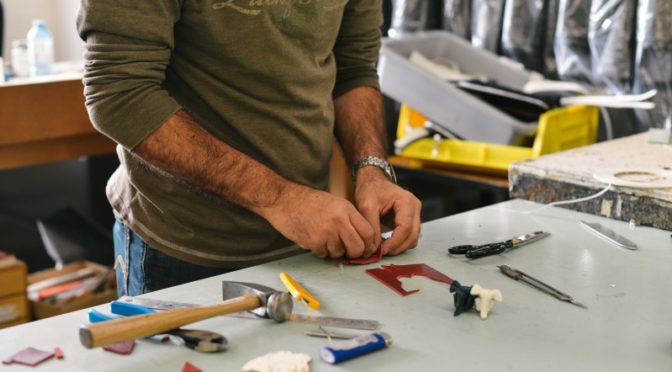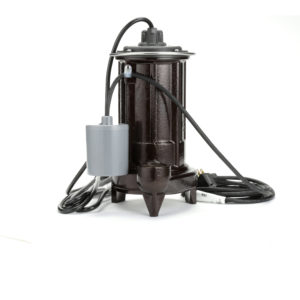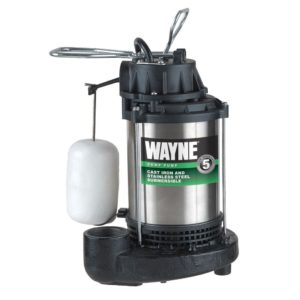
While most homeowners will call a professional plumber to handle a sump pump installation, the truth is that you can typically get the job done on your own if you have the knowledge, the tools, and the time to do it yourself. Today we’ll look at what sump pumps are, why you want one, how to dig sump pits, and how to install the pumps themselves. We’ll also cover how to choose AC, DC, AC/DC, and water-based sump pumps simple enough to install on your own and reliable enough to work for years.
What’s a sump pump and why would you want one?
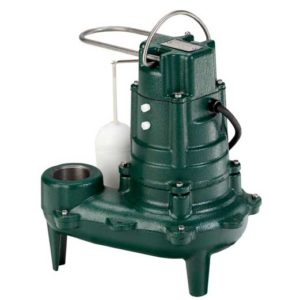
A sump pump is a essentially a water pump to carry water from one area (e.g., an excavated hole in your basement) to another (out of your home via a discharge pipe). People typically install them to keep basements dry (particularly finished or carpeted basements), since basements naturally accumulate water due to osmosis, groundwater, and soil saturation from rainfall and flooding.
Sump pumps are typically found in sump pits or basins, which themselves are usually installed beneath basement or at low points where water naturally accumulates. You can buy sump pumps in stores or online. They’re typically made of cast iron, aluminum, or plastic. They spend most of their time in dormant states, but activate when water sufficiently fills the sump pits in which they are immersed. They pump water out of the pit and out of your home and shut off automatically once water levels drop to pre-activation levels.
If you’re dealing with water problems in your basement, a sump pump is an effective, inexpensive, and easily installed tool to keep water at bay. But if you frequently deal with basement flooding, you’ll want to look into additional irrigation techniques beyond a sump pump installation.
What kinds of sump pumps are typically installed in a home?
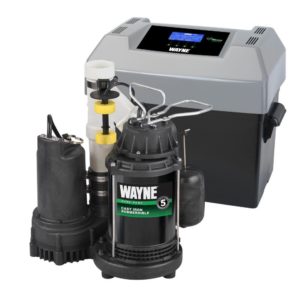
While there are lots of models on the market, nearly all sump pumps can be divided into one of four categories: AC-based sump pumps (e.g., a Zoeller M267), DC backup pumps (e.g., a Wayne WSM3300), AC/DC combination pumps (e.g., a Wayne WSSM40V), and water-based pumps (e.g., a Basepump HB1000-PRO). Most homes will use AC pumps exclusively, but we always recommend installing a backup pump that’s either DC-powered (via a deep cycle battery) or by water (which requires no electrical power in the home).
While most homeowners will call plumbers to install sump pumps, with enough motivation, a DIY-minded man or woman can also get the job done. If you’re set on installing your sump pump independently, you’ll want to budget at least $300 to $600 for materials (e.g., the pump, pipes, connectors, tools) as well as a weekend to get the job done from start to finish.
How do you dig and set up a sump pit or basin?
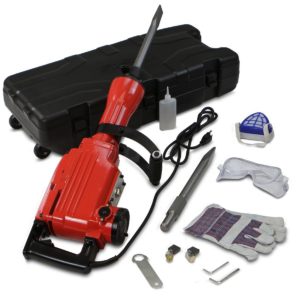
The first step is to set up the sump basin in your basement. Once you’ve bought a sump basin, you’ll need to buy, rent or borrow a jackhammer to open up the concrete flooring so you can dig the pit. If you already have a sump basin, of course, you can skip this step. Otherwise, rent an electric jackhammer from a hardware store, make sure it has a flat spade bit, don your eye, ear, and hand protection, and get to work. If you want a cheap electric jackhammer to keep around the house for multiple projects, we recommend the Xtremepower US 2200 watt.
Before digging, though, you’ll want to draw a circle around your sump basin to mark where you’re going to dig. Your basin should be upside down because it’s going to be wider at the entry, and you’ll need a hole big enough for it to fit easily. Also make sure your circle is at least 4, but no more than 6, inches around your basin. Keep at least a foot away from your basement walls so you don’t hit your foundation footing. With the jackhammer, follow the circle you’ve drawn to break through your concrete floor.
Once you’ve cleared the concrete, you’ll want to dig a hole deep enough to fit your sump basin completely inside; measure the basin beforehand to get the correct height, or simply try it in the hole as you dig. There will be gaps around the basin when it’s in the hole; use gravel to fill those in. You’ll want to level the gravel with a full inch of height above your basement level and then use concrete to fill the remaining gap. Use a trowel to smooth the concrete and let it set for a minimum of 24 hours.
How do you install the sump pump itself?
To install the pump, you’ll naturally want to follow the directions in the manual above all. However, if it’s an electric pump, you’ll generally place it in the basin once the concrete is set. If you’re setting up a water-based pump, it’ll need to tie into your water main to receive the water that powers it. Set up the check valve, inlet pipe, and discharge pipe if it isn’t already in place, and drill a hole in your rim joist so you can run the pipe out of your home.
Continue running the pipe until it’s positioned so water drains downstream of your foundation. Avoid discharging into a septic or sewer system without double-checking to ensure that you’re allowed to do so in your local building code. If you can’t get a good grade away from your home, it might be necessary to install a drywell and empty your discharge pipe into it.
Once the hole is set, seal it with caulk. Plug your pump in using a ground fault circuit interrupter, or GFCI outlet. Test the pump by using a garden hose or bucket to fill the pit with water. Follow a maintenance schedule to test your pump periodically to make sure it works when you need it to.
Which AC, DC, and water-backup sump pumps are easiest to install?
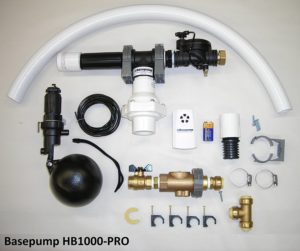
If you’re going to install a sump pump, you might as well make it easy on yourself . The following suggestions are reliable, easy to set up, and will also result in less time on the job for the plumber you call if things go wrong. For an AC pump, we’d recommend buying the Zoeller M267, which we’ve reviewed here and would trust to keep any basement dry. If you want a DC-only backup, choose the Wayne WSM3300, which we’ve reviewed here; it’s practically a drop-in installation. For an AC/DC combo, the Wayne WSSM40V, which we’ve reviewed here. And for the ultimate reliability, skip electricity entirely for a water-based sump pump like the Basepump HB1000-PRO, which we’ve reviewed here.
 If you find our work at PumpThatSump helpful, you can put our relentless reviewing of every pump and fixture on the market to the test by shopping via our links above for whatever you need to make your house a home. Despite being self-employed, we promise not to spend it all on health insurance.
If you find our work at PumpThatSump helpful, you can put our relentless reviewing of every pump and fixture on the market to the test by shopping via our links above for whatever you need to make your house a home. Despite being self-employed, we promise not to spend it all on health insurance.
